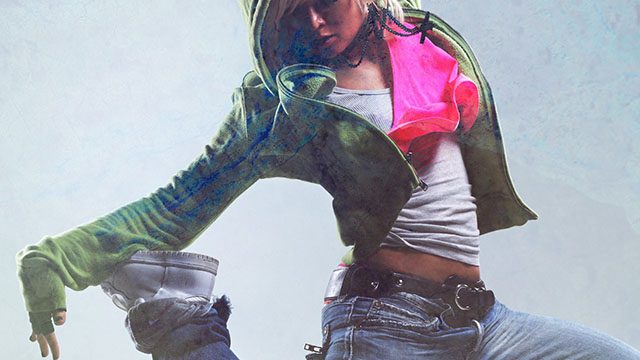SUMMARY
This is AI generated summarization, which may have errors. For context, always refer to the full article.

You are usually attracted to a work of art which speaks of something you yourself lack. I can’t remember who said that but I remember that it was in an interview and he was talking about visual art. Ever since I heard that, I try to remember art pieces that I have been riveted by and also notice the ones I now come across and see that, at least in my case, it really is most often, true. I don’t think it is a “causal” relationship. It is not that I lack something, therefore, I am attracted to that something in visual art. They just occur together for some reason.
Lately, I am seeing that for me, it also holds in the performing arts. I am so enthralled by dance performances and yes, I think every bone and muscle in my body seems to be hardly inhabited by dancing prowess or if they are, the prowess has taken a leave. But this is certainly the opposite for the dancers and most recently in the one I witnessed in a dance performance called “Passages” last weekend. Their performance was so captivating that for the first time, even if I am sure that dancers have known this for themselves ever since, I declared to myself that dance is truly a powerful language in a league all its own.
“Passages” was a series of 7 dance performances, each with their own theme, but connected by the larger weave of complex human emotions: penetrating another person’s soul, loss, leaving home – all with love – arriving, departing, returning, morphing.
As they danced, I was thinking what magnificent performance human biology too was capable of! All the dancers who performed and choreographed – Christine Crame, Karmela Cortze-Jabla, Bianca Perez, Victor Maguad, Ian Ocampo, Rita Winder, Jm Cabling, Al Garcia, Aisha Polestico, Dindong Selga, Gia Geguinto, Jean Marc Cordero, PJ Rebullido, Erl Sorilla, and Elena Laniog-Alvarez – they had fundamentally the same number of bones and working muscles as other humans. But how could they make their bodies speak about life, love and loss in 10 minutes that could leave everyone breathless and permanently marked by the staggering beauty of the human form in motion?
What inhabits dancers in a deep, permanent way that is not present in non-dancers? I wanted to know. At least in what science could grasp, for now.
Science, as far as I have investigated, is still the clumsy investigator of the intangible. But its job is to try to see what it could grasp with the tools available.
For a good number of scientists, they are looking at the biomechanics of dancing by looking at the force, range of motion, repetitions demanded by dance and how the human body adapts to this art form. This scientific investigation of dance has come up with several insights as to the biology involved in constant, directed motion as well as how to prevent injuries that could be caused by dance. There is certainly about our biological engineering that we have been pushing beyond known limits when it comes to dance.
Other scientists are looking at what happens in the brain when people dance – both professional dancers and non-pros. Brain scans of dancers have shown that a whole range of brain regions are activated when dancing. This includes the motor cortex involved in the planning, control and execution of moves, the somatosensory cortex for motor control and also takes part in eye-hand coordination, the basal ganglia regions to synch movements and the cerebellum which puts together inputs from the brain and spinal chord to plan fine and complex motions. The brain has its own dance to make you dance.
There are also those who have come to look at dance as therapy as it helps patients of Parkinson’s disease or even dementia. A growing number of studies have shown that dance really improves the cognitive and motor abilities of such people. Even brain studies on the arts and education has identified “dancing” as a powerful way to learn not just dance but also be motivated, be more creative and form social bonds which are the joyful pillars of being alive.
And what about genes? Are there really those who were born to dance? Apparently, yes. A study made to tease out what professional dancers have in their genes have so far identified a variant in their serotonin transporter and vasopressin receptor genes. Serotonin transporter plays a role in regulating mood which includes the expressive state in which dancers are in when they are performing. Vasopressin plays a role in social bonding – that invisible undulating thread which dancers seem to weave between them and their audience.
Vassopresin, serotonin, somatosensory cortex, basal ganglia, bioengineering are hardly the things on your mind when you dance or witness someone dance their heart out. In fact, you don’t have to know them to dance or appreciate dance. But it explains how far reaching, deep and wide, the arts could be in transforming individual and collective lives. They prove that the arts are not whimsical inventions of humans who, for one reason or another, do not do overt math, science and engineering. Dancers, like other artists, just live them out extravagantly in their craft out without probing them. And we are all better for it. It is indeed, what they do for love. And we too who can’t dance, won’t and can’t forget that they do so. Bravo, dancers! – Rappler.com
Add a comment
How does this make you feel?
![[In This Economy] A counter-rejoinder in the economic charter change debate](https://www.rappler.com/tachyon/2024/04/TL-counter-rejoinder-apr-20-2024.jpg?resize=257%2C257&crop=267px%2C0px%2C720px%2C720px)
![[Vantage Point] Joey Salceda says 8% GDP growth attainable](https://www.rappler.com/tachyon/2024/04/tl-salceda-gdp-growth-04192024.jpg?resize=257%2C257&crop_strategy=attention)
![[ANALYSIS] A new advocacy in race to financial literacy](https://www.rappler.com/tachyon/2024/04/advocacy-race-financial-literacy-April-19-2024.jpg?resize=257%2C257&crop_strategy=attention)


There are no comments yet. Add your comment to start the conversation.